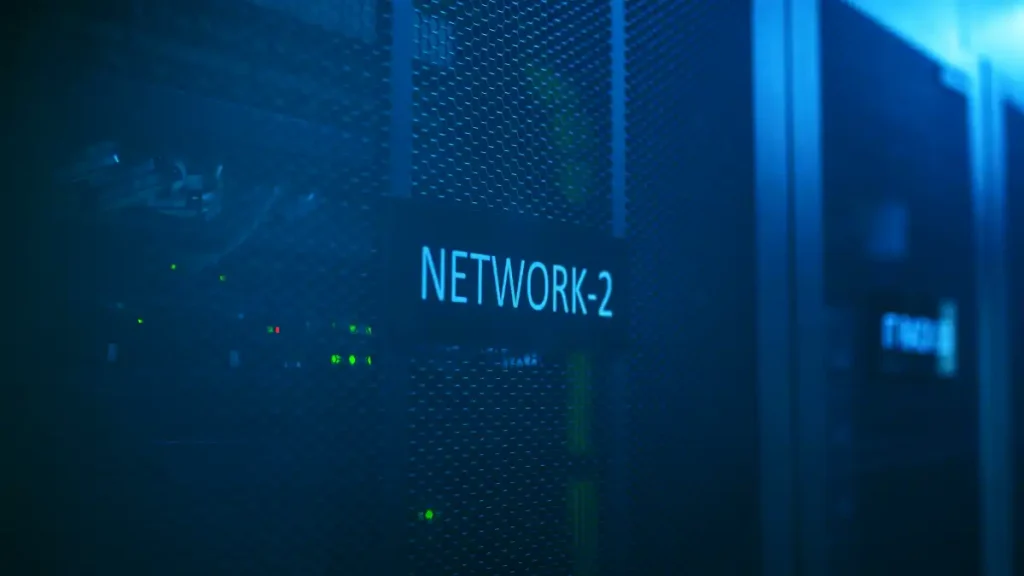Introduction
In an era where data has become the lifeblood of organizations, the importance of robust data center security cannot be overstated. Cyber threats are evolving at an unprecedented pace, targeting vulnerabilities within computing environments that house crucial business information. As organizations increasingly migrate to cloud-based infrastructures and expand their digital footprints, protecting these vast repositories of sensitive data is paramount—not only for compliance with legal regulations but also for maintaining trust among clients and stakeholders. This article delves into essential security measures that must be implemented to safeguard data centers against both external and internal threats.

Organizations need to adopt a multifaceted approach to establish a resilient security posture that incorporates physical protections, network security strategies, stringent access controls, and efficient incident response plans. Physical barriers such as surveillance systems and controlled entry points form the first line of defense against unauthorized intrusions. Meanwhile, sophisticated network security protocols—ranging from firewalls to encryption techniques—serve to fortify digital assets and ensure secure data transmission across networks. Beyond technology measures alone, cultivating a culture of awareness through regular training and compliance checks significantly bolsters defenses against potential breaches. By understanding the intricate layers of protection required to defend against today’s cyber risks, readers will gain valuable insights on how to navigate the complex landscape of data center security effectively.
Physical Security Measures
Physical security is critical to protecting data centers, where access to sensitive information must be strictly regulated. One of the primary strategies employed is the implementation of robust access control systems. These systems utilize technologies such as key cards, biometric scans, and PIN codes to restrict entry to authorized personnel. This level of sophistication in access control deters unauthorized access and provides an audit trail for accountability.
In conjunction with access controls, surveillance cameras and monitoring systems play an integral role in threat detection and incident management. Data centers typically feature advanced video surveillance technology paired with motion detection capabilities that allow for real-time monitoring of physical premises. Such automated systems enable the swift identification of unusual behavior, prompting immediate alerts to security personnel who can investigate breaches as they occur.
Moreover, design considerations are imperative when constructing a secure data center facility. Strategic placement and layout can significantly mitigate risks associated with both natural disasters and criminal intrusions. For example, positioning the data center away from flood-prone areas or high-crime neighborhoods reduces vulnerability to environmental factors and theft alike. Additionally, designing secure layouts incorporating layered security measures—such as adding fencing around the perimeter and secure lobbies—creates multiple barriers against unauthorized entry. This structural foresight enhances physical protection and complements technological safeguards in establishing an overarching security environment.
Altogether, these elements create a comprehensive approach to physical security in data centers.
Network Security Strategies
In the realm of data center security, network security strategies are a critical frontier that must be implemented to ensure robust protection against unauthorized access and cyber threats. Firewalls serve as the first line of defense by filtering incoming and outgoing traffic based on predetermined security rules. They help in effectively managing potential intrusions while allowing legitimate users continuous access to necessary resources. For instance, deploying next-generation firewalls (NGFW) not only enables packet inspection but also integrates intrusion prevention systems (IPS), which enhance the detection of sophisticated attacks such as Distributed Denial-of-Service (DDoS) attempts.
Regular updates and patch management are essential components of any effective network security strategy. Cyber threats are continually evolving, making timely updates vital for closing known vulnerabilities in software applications and operating systems. Neglecting these updates can lead to breaches through unaddressed weaknesses; therefore, organizations should establish a routine schedule for reviewing and applying patches as soon as they become available. A study by Ponemon Institute revealed that 60% of data breach victims had outdated software installed before an incident occurred, underscoring the importance of proactive measures such as vulnerability assessments and automated patch management tools.
Moreover, encryption techniques play a pivotal role in safeguarding data transmissions across networks. By transforming readable information into unreadable code during transmission phases, encryption ensures that even if data packets are intercepted, they remain incomprehensible to unauthorized parties. Techniques such as Secure Sockets Layer (SSL) or Transport Layer Security (TLS) encrypt communication between users and servers, reducing risks associated with man-in-the-middle attacks significantly.
Collectively, employing comprehensive network security strategies—including firewall deployment, regular updates accompanied by stringent patch management practices, and innovative encryption techniques—forms a multi-layered defense crucial for securing sensitive data within modern data centers. As cyber threats continue to evolve rapidly, IT professionals must prioritize vigilance in fortifying these corners of defense while adapting approaches to preemptively address emerging challenges.
Access Control Protocols
Access control protocols are critical components of a comprehensive data center security strategy, serving as the first line of defense against unauthorized access and potential breaches. One of the foremost practices in this realm is Multi-Factor Authentication (MFA). MFA significantly enhances security by requiring multiple forms of verification before granting access. For instance, even if an employee’s password is compromised, an additional authentication method—such as a code sent to their mobile device—would still protect sensitive information. According to a report from the Cybersecurity & Infrastructure Security Agency (CISA), implementing MFA can block up to 99% of automated attacks, making it a standard practice for organizations seeking robust protection.
Equally important is the use of Role-Based Access Control (RBAC) to manage user permissions effectively. RBAC allows organizations to restrict access based on unique job functions, ensuring that employees only have access to the data necessary for their roles. For example, while finance team members may need access to sensitive payroll information, customer service representatives should be limited to data pertinent to client interactions. This minimizes exposure during potential breaches and streamlines compliance efforts with regulatory standards like GDPR and HIPAA by controlling who can view or manipulate personal data.
Regular audits and reviews of access logs and user permissions play a crucial role in maintaining an effective access control system. These audits identify discrepancies or unusual patterns that could indicate security threats or misuse of privileges. Furthermore, monitoring and auditing promote accountability within teams; when staff know that their activities will be monitored periodically, they are less likely to engage in risky behavior regarding sensitive information.
As cyber threats evolve in complexity and frequency, these measures help mitigate risks and foster a culture of security accountability among employees, ultimately preserving organizational integrity and consumer trust.
Data Backup Solutions
Data backup solutions are a fundamental component of any effective data protection strategy, particularly within data centers where the potential for data loss can have severe repercussions. Regular backups play a crucial role in disaster recovery by ensuring that critical information is not irretrievably lost due to system failures, cyberattacks, or natural disasters. In fact, according to a report from the Cloud Industry Forum, failure to implement sufficient backup strategies can lead to significant operational disruptions and financial losses, with 60% of businesses reporting that they would be unable to survive more than six months after losing critical data. This underscores the need for robust backup solutions that align with organizational risk management practices.
Organizations may employ several types of backup strategies depending on their specific needs and available resources. A full backup involves copying all selected data and storing it in a secure location; while this method provides a complete snapshot of systems at one time, it can require substantial storage space and longer processing times. Incremental backups offer an efficient alternative by only capturing changes made since the last backup—either full or incremental—thereby minimizing storage use and reducing downtime during backups. Differential backups lie somewhere in between; they save changes made since the last full backup but will gradually consume more space until another full backup occurs. Each strategy has advantages and considerations, allowing organizations to select approaches that balance performance and comprehensiveness.
Data redundancy enhancement through offsite storage options must be considered in effective data center operations. Keeping copies of critical systems and applications in remote locations protects against localized incidents such as fires or flooding. For instance, cloud-based solutions provide high availability and scalability along with benefits such as automatic versioning and rapid restoration processes when needed. Implementing an offline media solution—often called hybrid storage—can also serve as additional protection against ransomware attacks that could compromise cloud-stored backups if feasible access controls are not enforced.
Successful data backup solutions require careful planning and execution tailored to each organization’s unique requirements. Establishing clear policies surrounding the frequency of backups, defining appropriate retention periods, and validating restore capabilities through regular testing are essential steps toward building a resilient infrastructure capable of maintaining continuous operations amid unforeseen challenges. By prioritizing these factors within their security frameworks, IT professionals can significantly mitigate risks associated with data loss while reinforcing overall organizational integrity.
Incident Response Planning
In the unpredictable landscape of data security, incident response planning is an essential component that enables organizations to swiftly address potential breaches or system failures. By developing a comprehensive response plan, data centers can minimize damage, preserve critical assets, and ensure rapid recovery from incidents. A well-crafted incident response strategy typically includes clearly defined roles and responsibilities, outlining who will be responsible for each action during a security event. This foresight streamlines communication and enhances the coordination necessary for effective resolution.
Training staff on incident response protocols is equally crucial in ensuring a prepared workforce. Regular training sessions empower employees with the knowledge and skills required to act decisively during actual incidents. For example, a major financial institution might simulate a ransomware attack scenario where employees role-play their responses based on predefined protocols. This hands-on approach allows individuals to familiarize themselves with their duties while enhancing team collaboration. Furthermore, involving various departments in these training exercises can help create a culture of preparedness throughout the organization.
Testing incident response plans through drills and simulations is integral for identifying gaps and areas for improvement within the strategy. Such exercises provide valuable insights into how quickly personnel can execute their assigned tasks under pressure, potentially revealing weaknesses that could be addressed before a real crisis occurs. Various scenarios should be examined—ranging from data breaches to natural disasters—to ensure that responders are ready for diverse challenges. Continuous evaluation reinforces creditable practices and fosters adaptability in ever-evolving threat landscapes.
Ultimately, effective incident response planning acts as an organization’s safety net during chaotic events. By diligently preparing for unforeseen circumstances—developing robust plans, thorough training initiatives, and rigorous testing—they cultivate resilience against threats that could compromise their data integrity and reputation. As cyber-attacks become increasingly sophisticated, investing in these preparative measures becomes imperative in safeguarding critical information stored in data centers.
Monitoring and Logging Practices
Robust monitoring and logging practices are integral components of an effective data center security strategy, ensuring organizations can detect threats in real time and maintain comprehensive records of system activities. Continuous monitoring systems utilize sophisticated tools to oversee network traffic, user activity, and system performance. For example, deploying Intrusion Detection Systems (IDS) can flag any unusual behaviors or potential unauthorized access attempts, allowing security teams to respond promptly. According to a study by the Ponemon Institute, organizations that implemented real-time threat monitoring reported an average reduction in breach detection time from 200 days to just 56 days.
Developing thorough logging practices supports detailed audit trails crucial for forensic analysis following a security incident. Logs record all critical activities within the data center environment, including user logins, file access events, and configuration changes. Utilizing centralized logging solutions like SIEM (Security Information and Event Management) platforms enables IT professionals to aggregate logs from multiple sources. This consolidation allows for more efficient analysis when investigating incidents or compliance auditing—enabling clear visibility into who accessed what information at any given time.
Regularly analyzing logs is vital for identifying abnormal activities that could signal a breach or other vulnerabilities in the system. Implementing automated log analysis tools with machine learning capabilities can significantly enhance this process. Such tools can sift through vast amounts of data quickly to identify abnormal patterns indicative of security threats—for instance, unexpected spikes in outbound traffic might suggest data exfiltration attacks are underway. The National Institute of Standards and Technology (NIST) recommends conducting periodic log reviews as part of cybersecurity best practices to ensure anomalies are detected early before they escalate into serious breaches.
Compliance with Regulations
In the realm of data center security, adherence to industry regulations such as the General Data Protection Regulation (GDPR) and the Health Insurance Portability and Accountability Act (HIPAA) is paramount. GDPR imposes strict requirements on organizations handling the personal data of EU citizens, emphasizing transparency, consent, and individuals’ rights over their information. Similarly, HIPAA outlines essential standards for protecting sensitive health information in the U.S., mandating specific safeguards to ensure confidentiality and prevent unauthorized access. By complying with these regulations, data centers fulfill legal obligations and build trust with clients and partners by demonstrating a commitment to safeguarding critical data.
The significance of adhering to compliance standards transcends mere legality and is a foundation for robust data protection practices. Compliance frameworks provide guidelines that help organizations identify vulnerabilities and implement necessary controls to mitigate risks effectively. For instance, regular auditing for HIPAA compliance often uncovers potential gaps in security measures that could lead to breaches if left unaddressed. Moreover, failure to comply may result in substantial fines or even operational shutdowns during regulatory investigations, making proactive adherence crucial for any responsible data center manager.
Regular compliance assessments are vital tools in maintaining an effective security posture within a data center environment. These evaluations consist of routine audits that verify adherence to industry regulations and facilitate continuous improvement in security measures based on emerging threats and technologies. For example, companies leveraging automated compliance solutions can regularly scan their infrastructures against changing regulations and best practices without heavily taxing resources. This persistent approach allows them to adapt quickly while enhancing their resilience against cyberattacks.
Ultimately, embracing rigorous compliance protocols creates a culture of accountability and vigilance within organizations operating data centers. By prioritizing regulatory adherence through frequent assessments and updates of security practices, businesses position themselves favorably against both external threats and internal missteps.
Emerging Technologies in Data Center Security
As data centers evolve, so too do the security measures that protect them from ever-changing threats. One of the most significant advancements is the utilization of artificial intelligence (AI) for threat detection. AI-driven security solutions can analyze vast amounts of data in real time to identify unusual patterns that might indicate a potential breach. For instance, companies like Darktrace use machine learning algorithms to create a “self-learning” cybersecurity platform that continually adapts to new attacks by understanding typical behaviors within the network. This proactive approach can significantly reduce response times and amplify the effectiveness of security protocols.
Blockchain technology is another groundbreaking innovation making strides in data center protection. Its inherent properties ensure that once data is recorded, it cannot be altered without consensus among all parties involved, enhancing data integrity checks considerably. Implementations such as distributed ledger technologies allow organizations to verify transactions and keep secure audit trails easily accessible yet tamper-proof. By integrating blockchain into their systems, businesses can safeguard against unauthorized access or modifications while also improving transparency and accountability within their operations.
Additionally, advanced biometric systems for physical access control are becoming increasingly prevalent in safeguarding data centers. These systems enhance traditional methods by employing biological measurements—such as fingerprints, facial recognition, or retinal scans—to grant access solely to authorized personnel. The difficulty in replicating these biometric markers adds an essential layer of assurance that traditional access codes often lack.
Conclusion
Securing a data center is a multifaceted endeavor that requires comprehensive security measures. From physical security controls like access restrictions and surveillance systems to sophisticated network strategies, including firewalls and encryption, every aspect plays a crucial role in protecting critical information. Additionally, reinforcing access control protocols through multi-factor authentication, establishing robust data backup solutions, and formulating incident response plans are essential for mitigating risk. Regular monitoring, logging practices, compliance with regulations, and adopting emerging technologies further enhance the overall security posture necessary for today’s digital landscape.
It is important to recognize that data center security is not a static process; it demands ongoing assessment and adaptation to address ever-evolving threats. As technology advances, so too do the tactics employed by malicious actors. Therefore, organizations must remain vigilant by consistently revisiting their security strategies and investing in new technologies as they emerge. By doing so, they can ensure their data centers remain safeguarded against potential vulnerabilities while maintaining business resilience in an increasingly complex cyber environment.







